The Palazzo Vecchio, bordering the Uffizi Palace, was one the many Medici palaces situated within the confines of Florence. Like all of the other Medici palaces, the Palazzo Vecchio is full of great works of art and sculpture. It is also replete with many secret passages connecting the main rooms of the palace, as well as leading to rooms that were known only to the Medici's . We were fortunate to go on a tour of some of these secret passages and rooms, that the general public usually does not get to see. While a bit claustrophobic at times, it was an fascinating experience.
This diagram shows just a sampling of some of the secret passages and rooms.
Many of the rooms adorned with beautiful works of art, also housed secret compartments in which valuable items could be stored. This storage space was located behind a painting in a room full of paintings. We were led to believe that all the wall paintings in this room hid such storage compartments. This luxurious room was Cosimo I's "man cave" (Carl and Josh take note). This was the one room in the palace that he could be absolutely alone if he wished to be, as most of his day he was surrounded by family, persons seeking his support for some issue, and/or servants.
In these very private rooms of the Medici, the valuable art also hid doorways to other passages or rooms.
These private rooms were adorned with as much beautiful art and sculpture as the main rooms of the palace. The woman at the far end of this room was Cosmo I's first wife, Eleanor of Toledo. She had 11 children.
A secret room off of a secret staircase. Not sure what the purpose of this room was.
Our secret passages tour of the Palazzo Vecchio (which lasted one and one-half hours) began of the street level floor in this room. The wall behind this costume, was part of the original Palazzo Vecchio prior to later enlargements of the palace. This costume was worn by the signoria, city council members who helped to rule Florence during the 13th and 14th centuries. Each signoria member was nominated and elected by a guild to which he belonged. They served for two months at a time and had to reside within the Palazzo Vecchio during their tenure. If they wished to be re-elected, they had to wait at least one year between terms. This rule was established in an effort to keep any one person from becoming too powerful, within a group that was very powerful by its nature.
This is the first secret passageway up into the palace from the room pictured above.
The top of the stairway.
This is one wall of the "man cave" of Cosimo I. Each of the lower paintings covered a hidden storage compartment, or in at least one instance a doorway to another passage.
One of the hidden storage areas behind the paintings in the "man cave".
As mentioned earlier, there are incredible artworks throughout the palace. This is a ceiling of just one small room that made up part of the secret passages tour. The artwork was coordinated with each other to form a theme or tell a story. In this particular room the corner pieces (highlighted at the bottom of the picture) depicted one of the four elements (earth, air, fire, and water) with the surrounding pictures continuing the theme of that corner.
This weather vane at one time sat atop the Palazzo Vecchio. The lion is the symbol of Florence.
These huge pictures adorn both side walls of the main meeting room of the palace. They reportedly tell the story of Florence, and/or of Cosimo I's life.
The huge ceiling tiles partially seen in the top of the previous picture, were painted and framed on the floor of the great hall. They were then hoisted up to be secured in place on the ceiling. This is the other side of the ceiling depicting the rafters of the roof and the beams to which the ceiling paintings below were attached. The wooden beams seen here are original to the palace and remain in good shape because of a good ventilation system that keeps the wood from being affected by humidity. The rafters are anchored to the outside walls with gaps to allow the wood to expand during warm weather without causing damage to the supporting walls. The beams also support the ceiling tiles with tie-rods that also allow for some movement. The guide told us that when a bomb was exploded outside the palace in the 1990's, the beams only moved a few centimeters and no damage occurred.
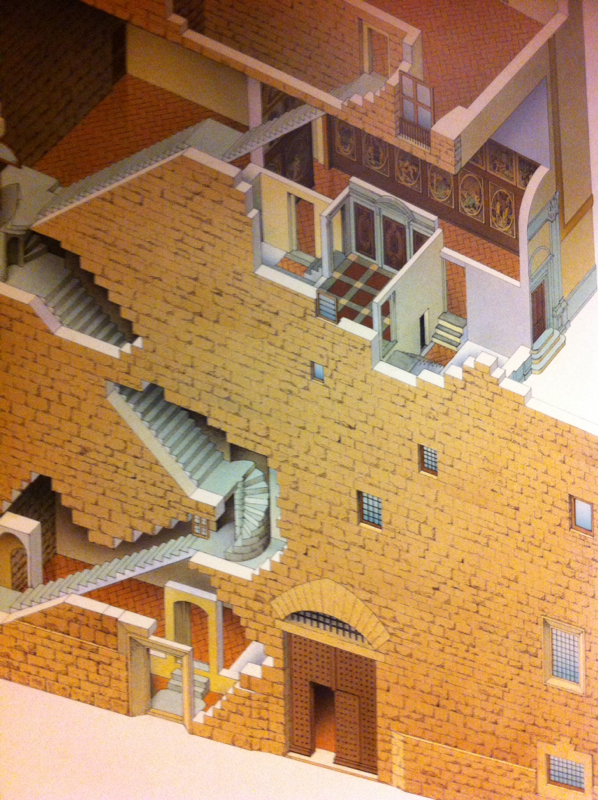
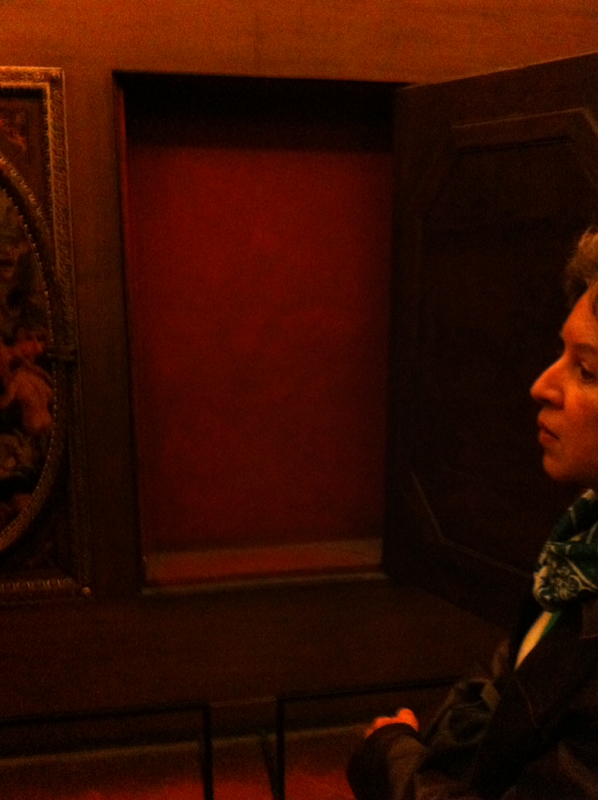
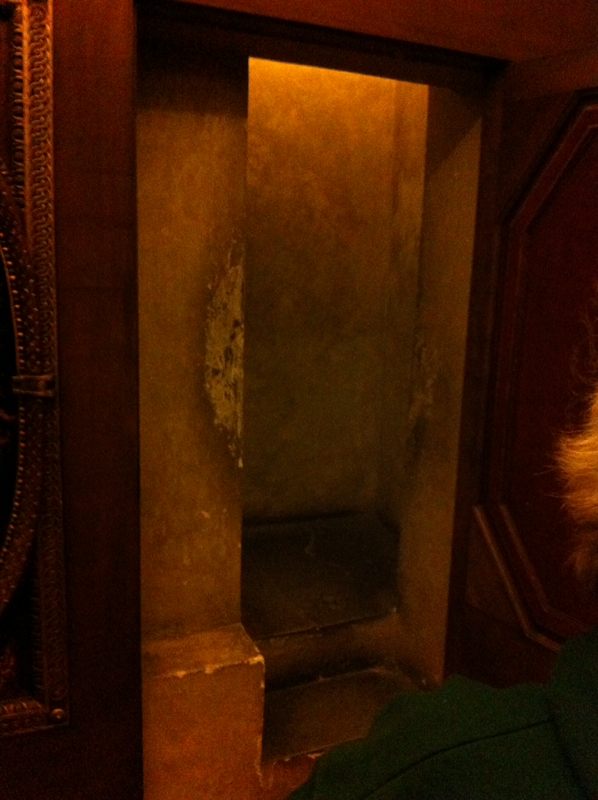
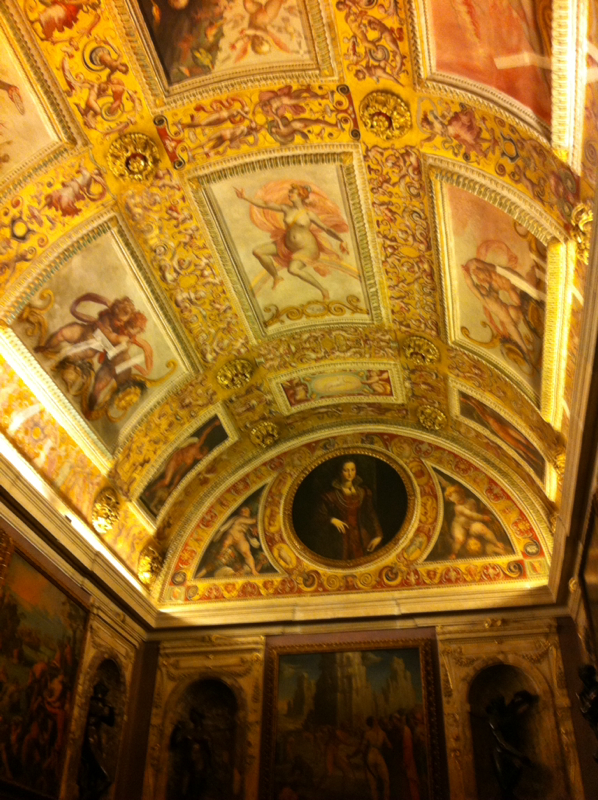
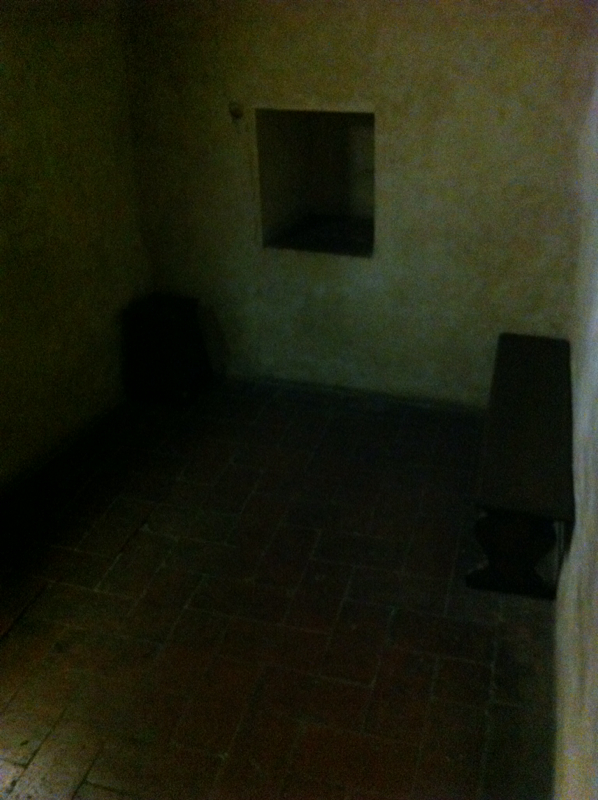
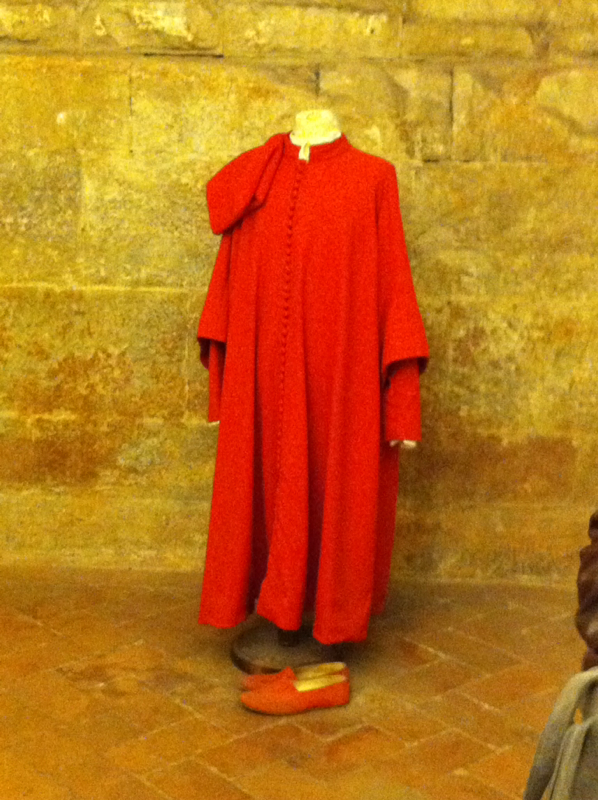
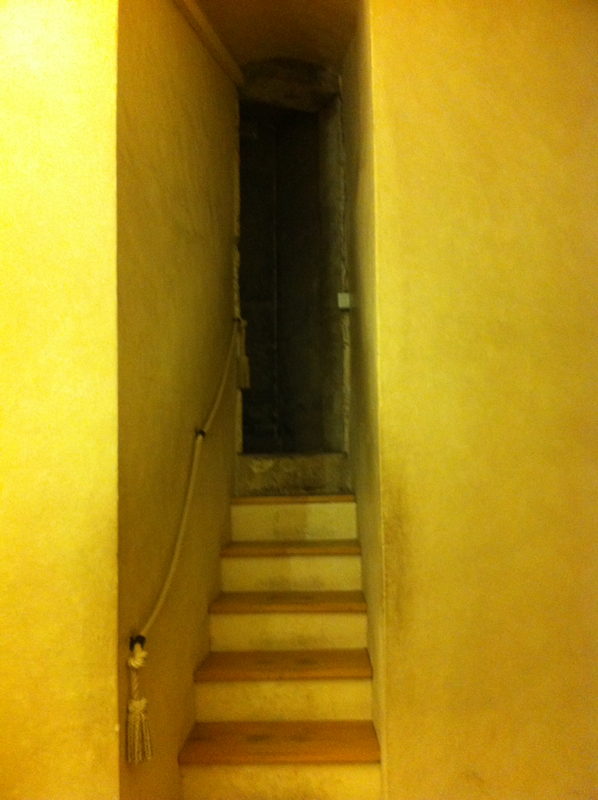
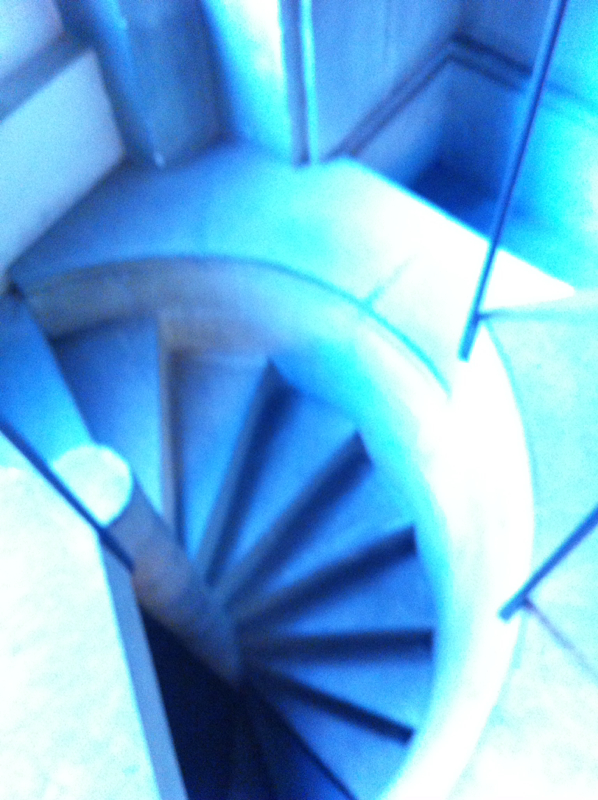
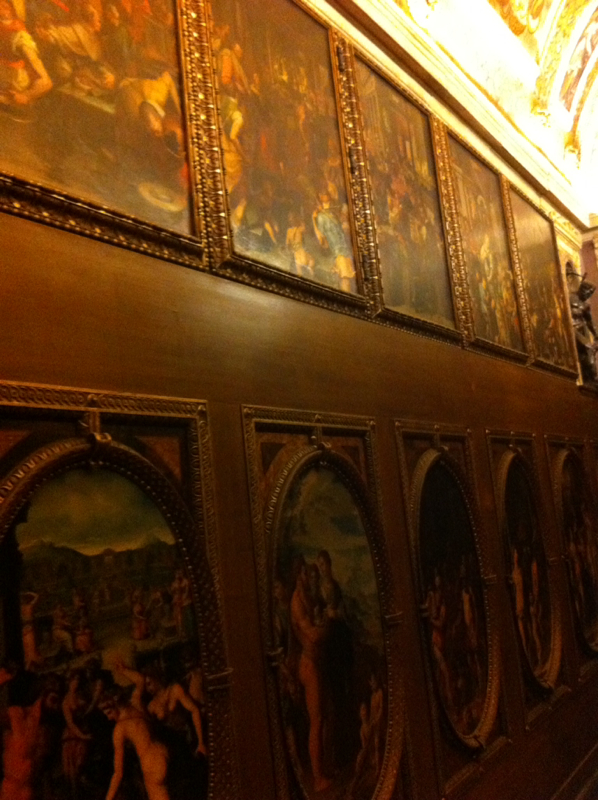
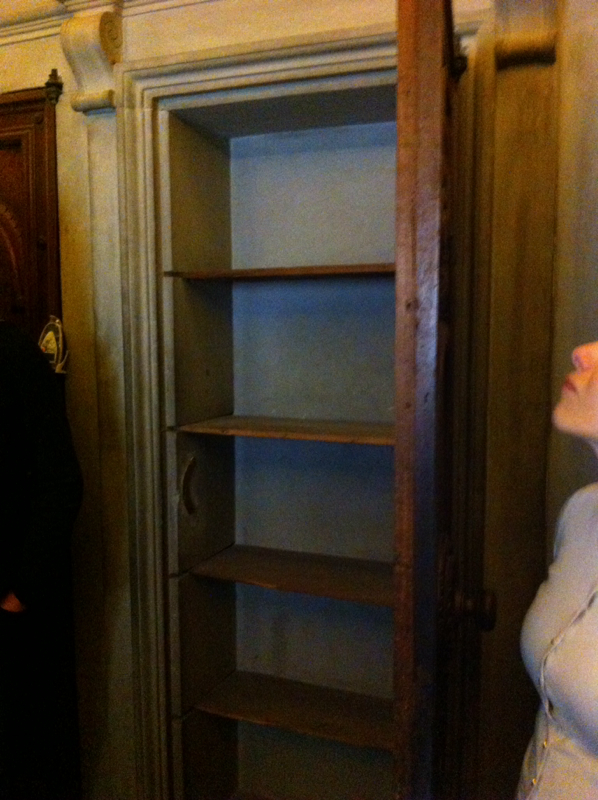
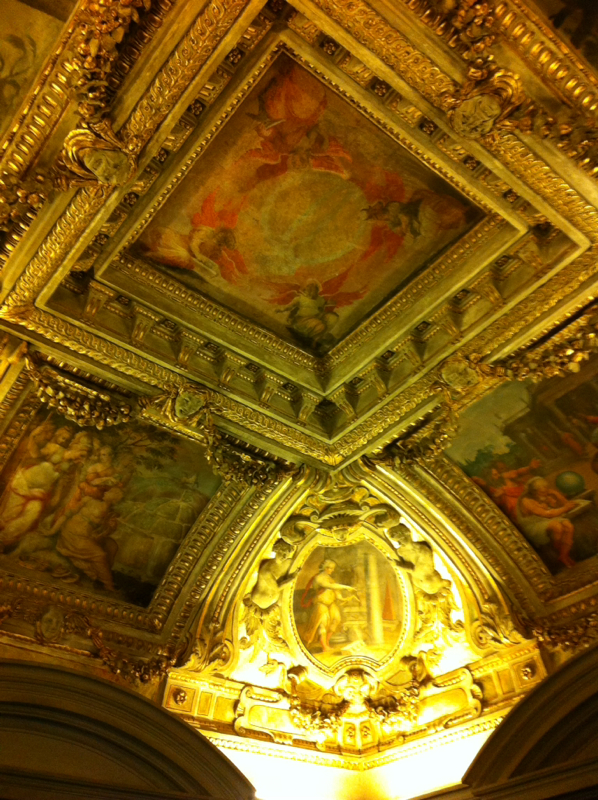
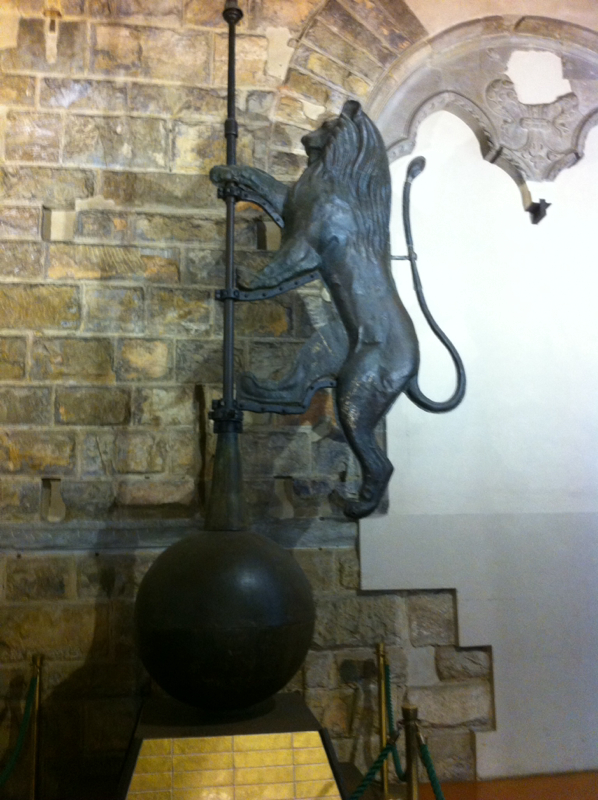
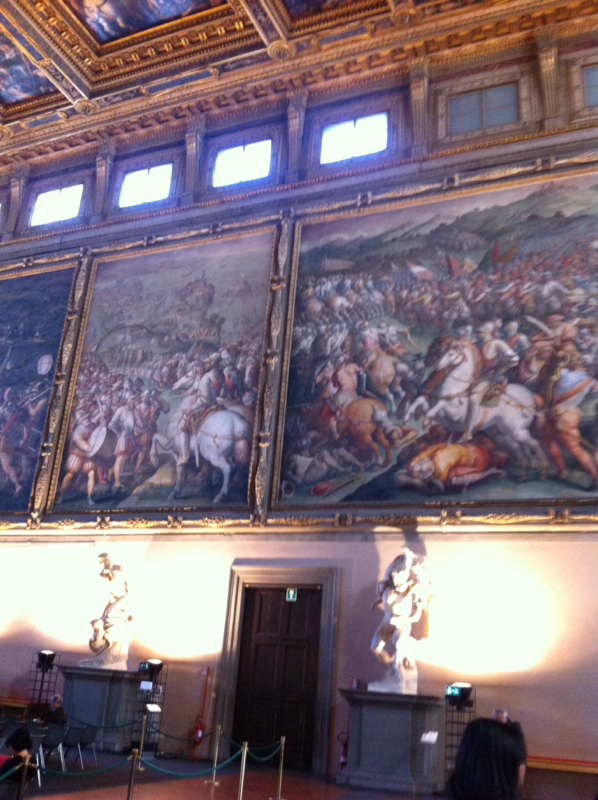
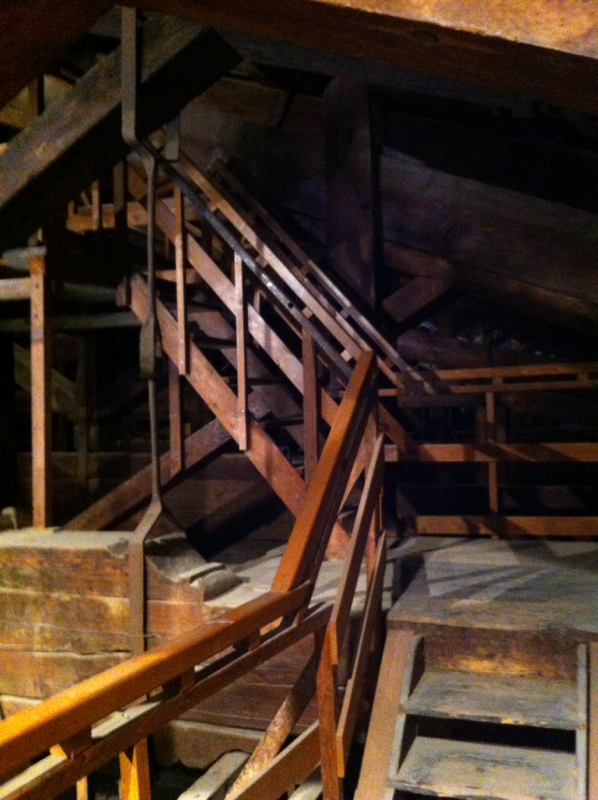
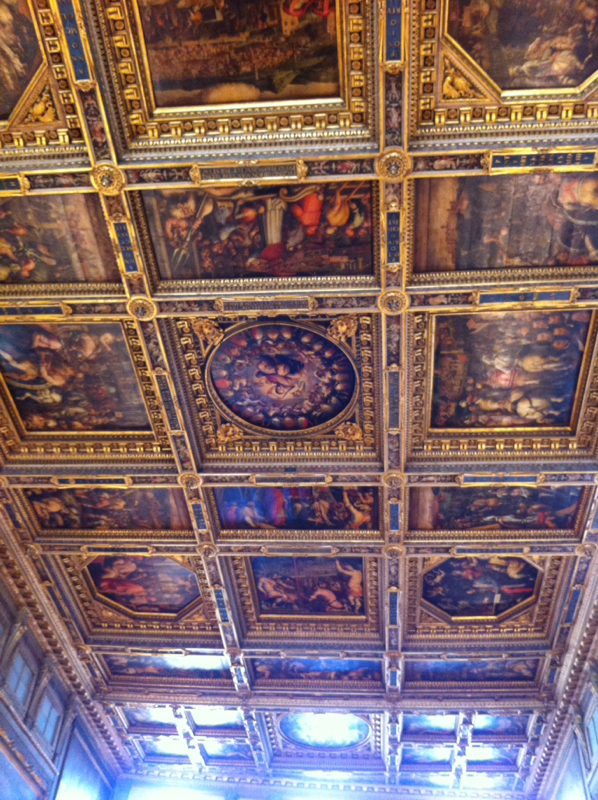
 RSS Feed
RSS Feed
